Resources
This carefully curated collection of resources will help you find packages and learning resources to help you on your R journey.
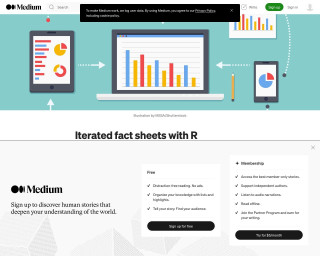
Iterated fact sheets with R Markdown
This article explains how to use R Markdown to create iterated fact sheets. It provides an overview of R Markdown, discusses the necessary ingredients for creating multiple fact sheets, and provides examples using the bad_drivers dataset.
Go to Resource
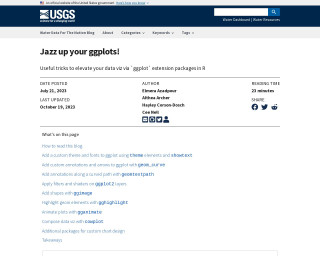
Jazz up your ggplots!
This blog post from USGS VizLab outlines various methods to customize data visualizations using ggplot2 and its extension packages in R. It discusses enhancing plots with custom themes, fonts, annotations, effects, shapes, highlights, and animations. The authors provide comprehensive code examples for each technique, encouraging reproducibility and the use of ggplot2 ecosystem rather than external design software. The blog also features a guide on how to read it effectively, including executing data-wrangling steps, installing necessary packages, and incorporating showtext for fonts.
Go to Resource
Jazz up your ggplots! | Water Data For The Nation Blog
This blog post provides useful tricks and examples to customize ggplot2 visualizations in R using extension packages. It covers topics like adding custom themes and fonts, annotations and arrows, filters and shaders, shapes and image, highlighting elements, plot animation, chart composition, and additional packages for custom chart design.
Go to Resource
Jazz up your ggplots! | Water Data For The Nation Blog
Useful tricks to elevate your data visualization with ggplot extension packages in R.
Go to Resource
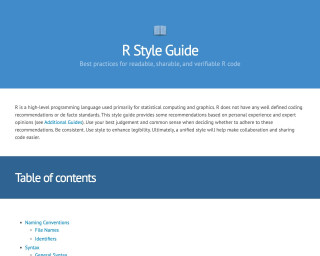
JEFworks Lab style guide
Best practices for readable, sharable, and verifiable R code
Go to Resource

Join Data with dplyr in R (9 Examples) | inner, left, righ, full, semi & anti
This tutorial provides examples and explanations of how to join and merge data frames in R using the dplyr package. It covers inner_join, left_join, right_join, full_join, semi_join, and anti_join functions.
Go to Resource
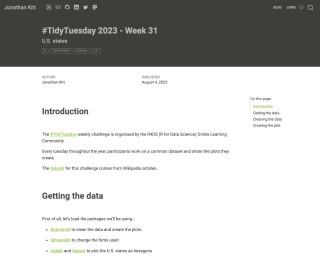
Jonathan Kitt - #TidyTuesday 2023 - Week 31
This is a tutorial on how to participate in the #TidyTuesday weekly challenge, organized by the R4DS Online Learning Community. The tutorial covers loading packages, downloading the dataset, cleaning the data, and creating visualizations.
Go to Resource
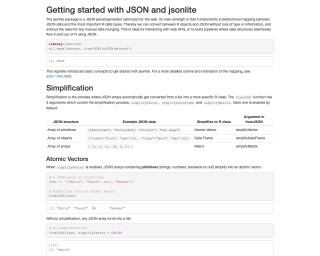
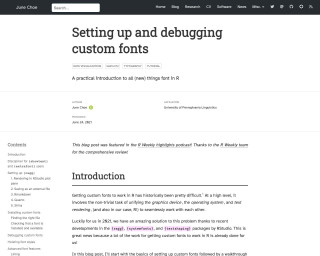
June Choe: Setting up and debugging custom fonts
This blog post provides a practical introduction to setting up and debugging custom fonts in R for data visualization using the {ragg}, {systemfonts}, and {textshaping} packages. It covers topics such as installing custom fonts, checking font availability, and advanced font features. The post also includes use-case examples and tips for using custom fonts in different R environments like RStudio, Rmarkdown, and Shiny.
Go to Resource
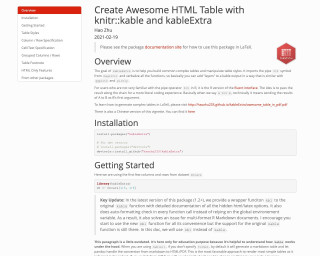
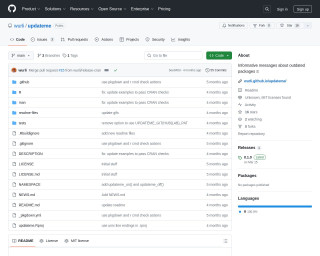
Keep your packages up-to-date with minimal hassle
{updateme} is an R package that enhances the library() function by displaying informative messages about the current status of loaded packages with respect to their latest versions. It supports packages installed from CRAN, Bioconductor, GitHub, and GitLab. The tool provides configurations for checking updates and can be easily integrated into the R startup process. The package also features caching mechanisms to improve performance and can be toggled on or off as needed. It's designed to help R users keep their packages up-to-date with minimal hassle.
Go to Resource
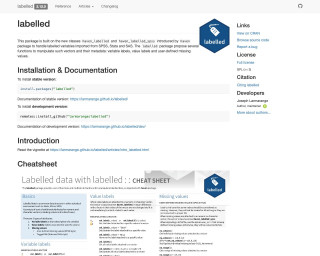
labelled
Manipulating Labelled Data is a package in R that provides functions for handling labelled variables imported from SPSS, Stata, and SAS. It allows for manipulation of variable labels, value labels, and user-defined missing values.
Go to Resource